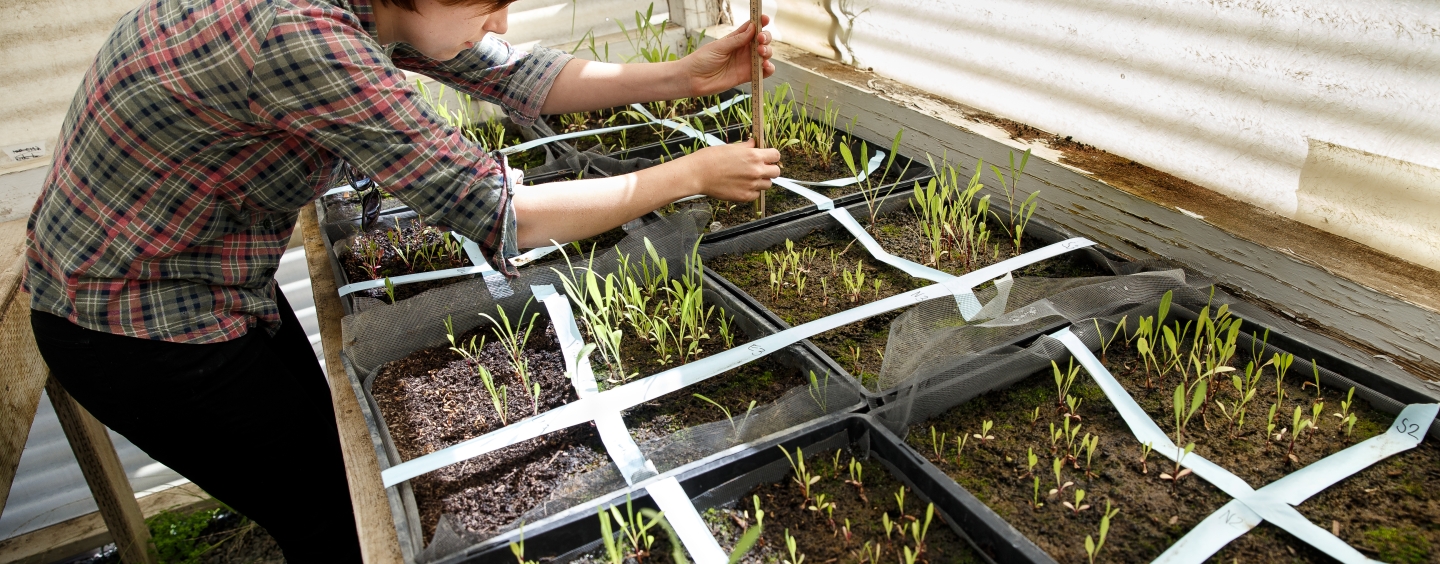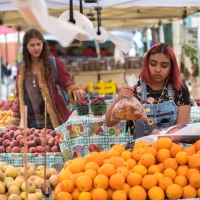Urban Farming in the Bay: How Community Gardens Are Feeding Neighborhoods

Between tuition, rent, and everything else, a regular grocery run for fresh fruit can feel like a luxury. The crippling cost of living divides our attention and budgets, forcing tough choices between academic necessities and nutritional ones. This is what food insecurity feels like and it’s a common struggle for so many of us. But what if the solution to this urban problem wasn't found in a store, but in the soil? Across San Francisco, a network of community gardens and urban farms is offering a different equation, one where investing a few hours of time yields a harvest of fresh, free food and a stronger, more resilient community.
Community gardens and urban farms are like nature pantries that grow hope alongside kale and tomatoes. They allow people to take control over their food security and develop communal ties. This isn't a distant concept, it’s happening at places like Alemany Farm, a 3.5 acre organic farm whose whole mission is to serve as a venue for "community building, education, and inspiration."1 Many of these gardens donate a significant portion of their produce to local food banks and shelters, while also ensuring that anyone who volunteers their time to help maintain the space has direct access to an array of harvested produce. It’s a place where you can volunteer and get your hands in the soil, leaving with fresh, free, healthy food for the week.
The best part is that not only are you able to combat food insecurity, but you’re also able to get involved in the community by learning to harvest your own produce. Many studies show that getting involved in community gardening is associated with better access to fresh food and improved mental well being.2 It’s a chance to disconnect from the stress of exams, get some vitamin D, and find a little quiet for your brain, all while doing something tangible to take control of your situation.
On average, college students pay anywhere from $100 to $300 per month on groceries trips. Becoming involved with local urban gardens can relieve a significant amount and support an organic, healthy diet. Resources like the Bay Area Urban Agriculture Map exist to make these places easy to find, connecting you directly to the "urban food producers"3 in your neighborhood. Ultimately, community gardens provide a vital opportunity to foster meaningful social connections, build mutual support through shared challenges, and promote financial stability.
Community Gardens by Bay Area County
San Francisco
● Alemany Farm, 700 Alemany Blvd, San Francisco, CA
● Garden for the Environment, 1590 7th Avenue, San Francisco, CA
Alameda
● Planting Justice Nursery, 319 105th Avenue, Oakland, CA
● City Slicker Farms, 2847 Peralta St, Oakland, CA
San Mateo
● Pacifica Gardens, Address: 830 Rosita Road, P.O. Box 883, Pacifica, CA
● Harvest Garden, Address: 660 Fairway Circle, Hillsborough, CA
Santa Clara
● Palo Alto Demonstration Garden, 851 Center Dr., Palo Alto, CA
● Faithful Farm, 4900 Marie P. DeBartolo Way, Santa Clara, CA
Marin
● The Wooly Egg Ranch, 503 Tennessee Valley Rd, Mill Valley, CA
● Indian Valley Organic Farm & Garden, 1800 Ignacio Blvd, Novato, CA
References
1. Feed America. Cultivating food security: the power of community gardens. Feed Am. Published 2023. https://www.feedam.org/blog-posts/cultivating-food-security-the-power-o…
2. Central Coast Farms. Bay Area urban ag map. Cent Coast Farms. Published 2023. https://www.centralcoastfarms.org/projects/bay-area-urban-ag-map 3. Alemany Farm. About us. Alemany Farm. Published 2023. https://alemanyfarm.org/
4. University of California Agriculture and Natural Resources. What is urban agriculture? UC ANR. Published 2022. https://ucanr.edu/site/urban-agriculture/what-urban-agriculture
Tags



